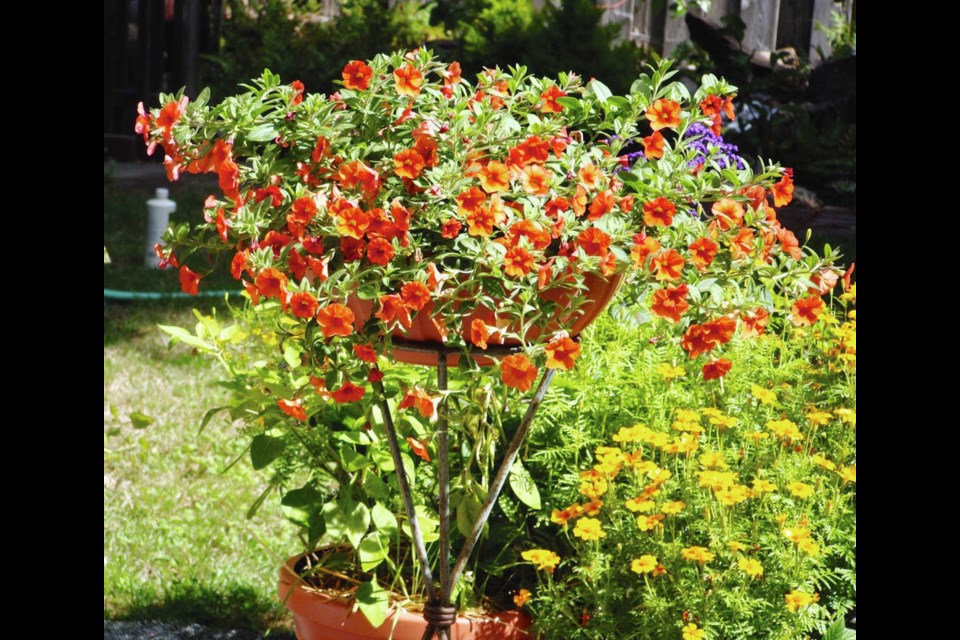The gently cooling weather in September always gives me the sense of a new year beginning in the garden. This is when the new growing season really starts. All the weeding, cleaning, soil protection and general renovating done now, while outdoor conditions remain useable, will help to make the hectic spring gardening season more pleasantly manageable.
Here are some of the projects I’ll be addressing to help fine-tune next year’s gardening.
• Pull up weeds before they can scatter thousands of seeds that will create unnecessary work as they germinate in the spring.
• Begin planning for next year’s plantings. Make a rough sketch of this year’s vegetable plantings. Make another for next year and begin planning for shifting locations of them all. List seeds left on hand and make another list of seeds needed for next year.
• Overgrown or congested perennial clumps? While there is still some warmth in the soil, dig and divide them. Replant only the youngest sections from around the edges of a clump.
• Widen awkwardly narrow paths. Clean paths and weed-proof them with cardboard and/or newspaper overlaid with wood shavings.
• Survey the landscape. What changes would simplify the garden’s care? Is a tree or shrub proving to be an irritating high-maintenance or overgrown thorn in your side? Consider a replacement. This sort of horticultural suffering is optional.
• Fancy a supply of fresh salad vegetables close to the kitchen? Look for a patch or lawn or gravelled surface that could be dug up and transformed over the fall and winter into a fertile, humusy soil for growing plump, juicy lettuces and other greens.
True confession. In the spring, I committed a crime against a common gardening rule: Plant only purchased, certified disease-free seed potatoes.
The root of the crime is my love for mashed potatoes, in my opinion the ultimate comfort food — one I indulge in rarely enough to render it a very special treat.
Over the winter, I discovered that one of the health food stores in my community kept in stock the most wonderful russet potatoes. They were perfectly formed and unblemished, and once steamed tender (sometimes with peeled garlic cloves) they transformed quickly into a creamy delicacy when mashed together with butter and cream.
I bought only a small number of the russet potatoes at a time, but even then, late in the spring, I found a few had developed sprouts. Because I’d enjoyed these special potatoes so much, and because they were grown organically and untreated with any chemicals, I could not resist the temptation to plant just a handful of sprouted pieces.
I found a tiny space in a corner of the food garden, between a patch of tall, self-sown larkspur and a bed of strawberries. The five pieces I planted yielded a satisfying bowlful of perfect tubers in late August.
Must break the rules once in a while. This time I got away with it, in spades.
Kabloom! Petunias have always germinated well and developed into bushy little transplants for me, despite the rather rudimentary conditions in my home. I’ve found Calibrachoa seeds a bit more tricky. That’s probably why most people have the good sense to buy transplants of these popular flowers.
Calibrachoa, also called “Million Bells,” is a petunia relative, native to South America. The plants flourish and cover themselves in tiny petunia-like flowers in warm, sunny conditions. Their broad, gracefully trailing habit makes them classic “spillers” in container plantings. Just one transplant was enough to fill and spill lavishly from its bowl type planter on the patio. Kabloom orange is a most beautiful colour, rich and deep.
T&T Seeds lists five colours in the Kabloom series as well as one colour in the Crave Series.
More burning. Messages keep coming in from gardeners wanting to warn others about the damage Euphorbia sap can inflict on skin. This latest is from Marion in Victoria.
“Please warn your readers to go to a mirror and dab at, not wipe away, Euphorbia sap that has splashed on the face. When it happened to me, not realizing the danger, I just wiped the sap away with the back of my hand. That smeared the sap and created a large burned area across my cheek that had to be treated by a doctor.”



